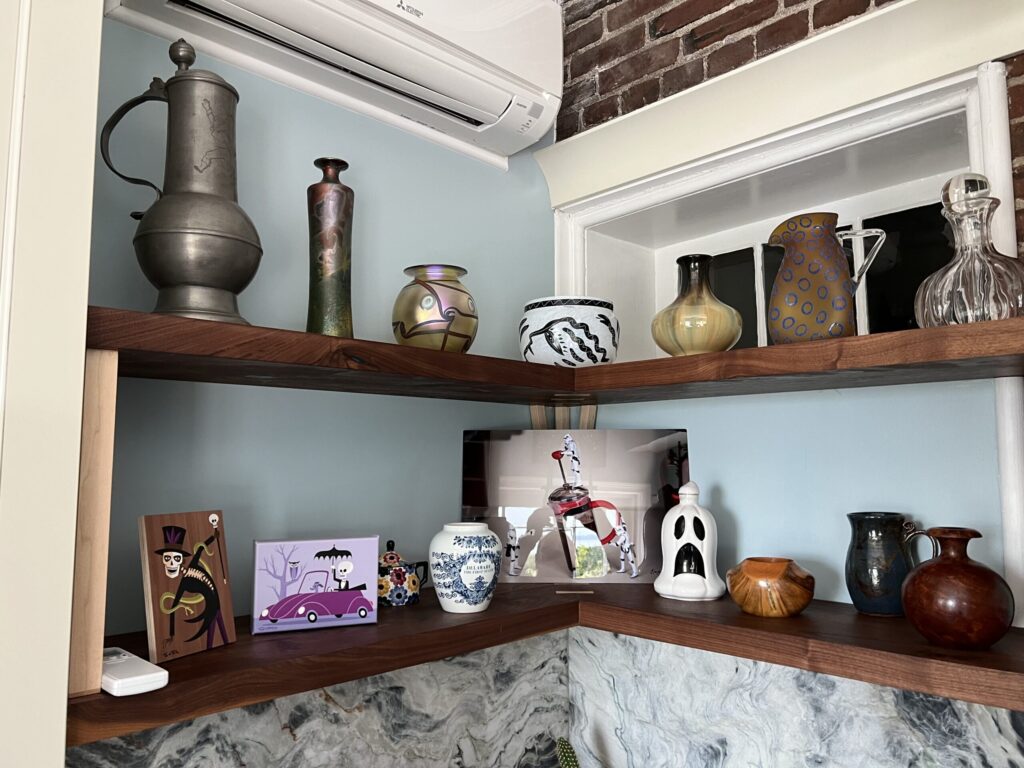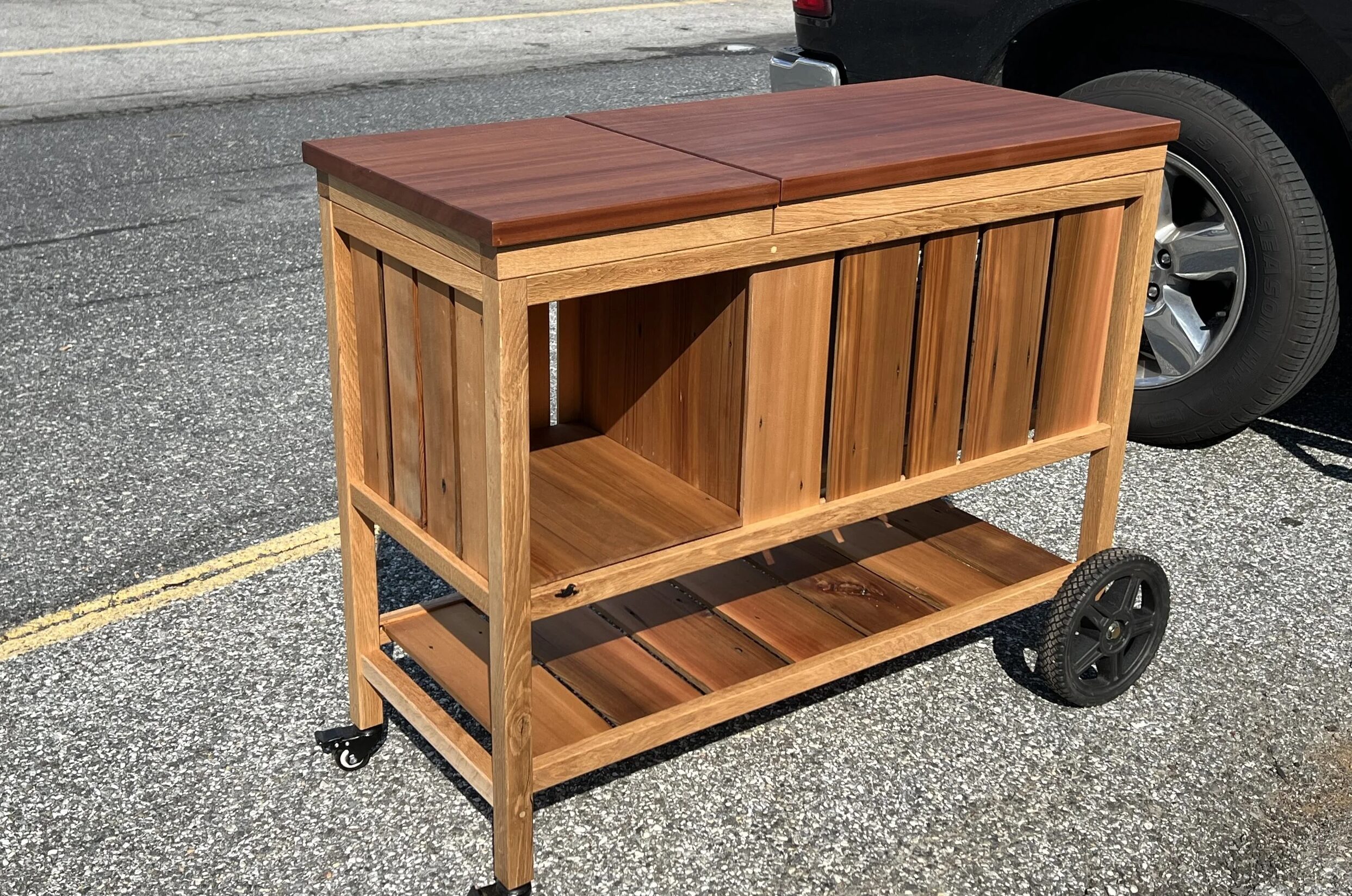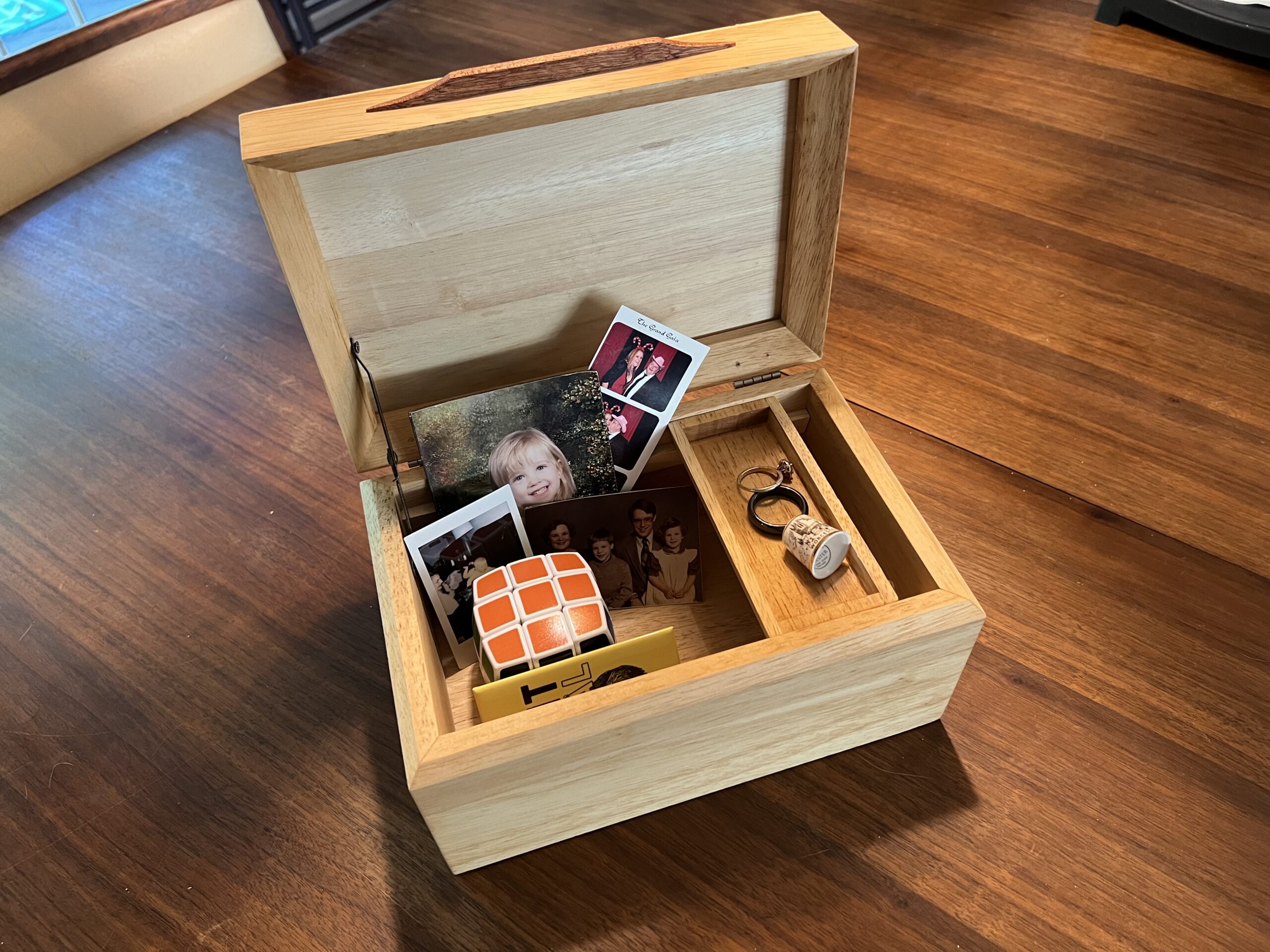A friend of mine reached out and wanted to hand off a client for an in-home corner shelf assembly for their recently rebuilt kitchen. I’m always eager and happy to help, so… that’s what we did.
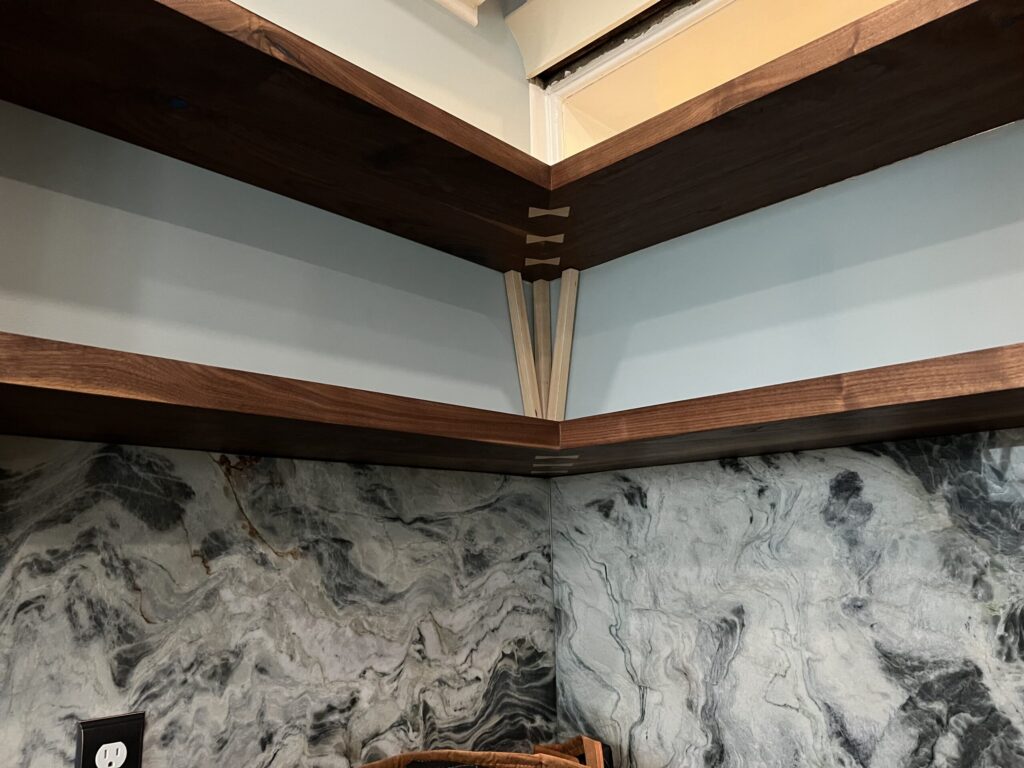
The client wanted a thick, beefy pair of floating shelves and we were able to get him close to the look he wanted, but less floating and more… modular. The problem with doing proper floating shelves is that the “back” wall of the kitchen (to the right side of the corner in the pic above) is plaster over lath and brick, and the side wall, to the left, is fire and water proof sheet rock over brick.
When doing floating shelves, typically we would cut away the dry wall to get to the structural components under those layers. In this case, that wasn’t an option. Combined with the in place, painted, newly refreshed kitchen walls with granite back splash, the house is also about 150-200 years old and is on a historically-protected street in Old New Castle, Delaware… one of the oldest, constantly-used cities in the country.
We had limits to what we could do the house, and some of those limits were being scared to break that granite back splash.
Instead, we tied each end into the cabinets on either side of the shelves, drilled in a few locking posts to the brick under all the plaster and sheet rock, and made hang divots on the back of the shelves. These shelves sit down on those locking pins, then the whole assembly is affixed at each end, and it turns out to be very solid and stable. The trusses between the shelves support the upper shelf in the back and in the corner.
It worked out perfectly and the client was thrilled with the results. He wanted some contrasting colors, so we did butterfly inlays to help lock the mitered corner (along with 10×50 dominos), and x-pattern end trusses with a load-bearing tree truss in the back, center corner, all made of hard maple.
The trusses on the ends were stick-framed with the cross members added with tenons cut into the ends of the cross pieces, and mortises hand chiseled in the outer frame. They’re very strong and should last the next couple hundred years.
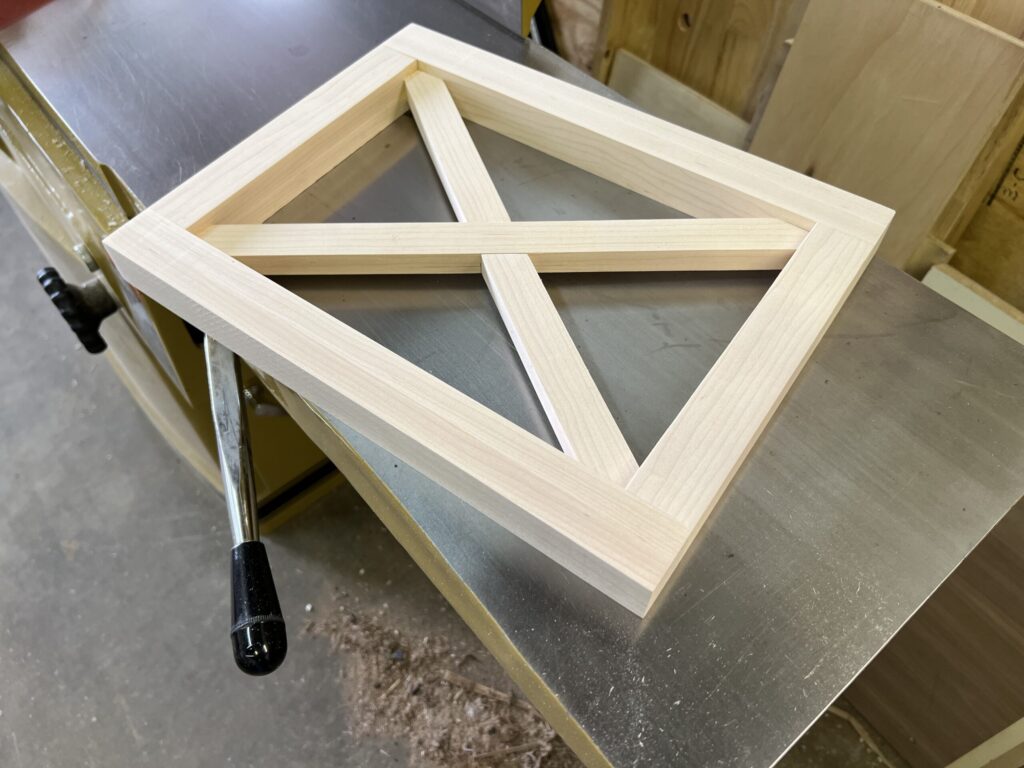
And of course, the final product, photographed a few months later on an unrelated visit to Jeff’s house.
